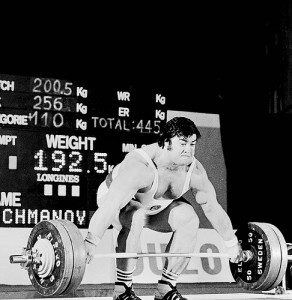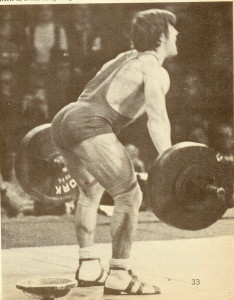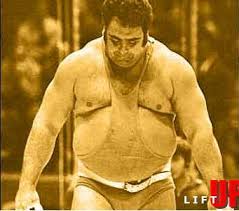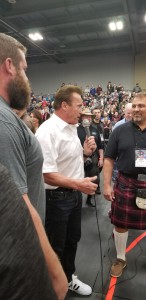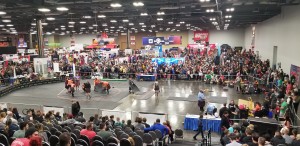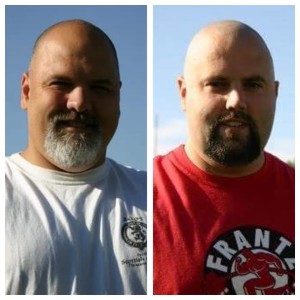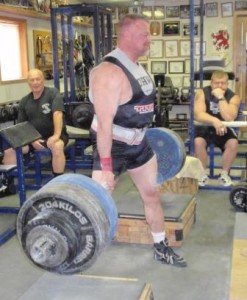By Thom Van Vleck
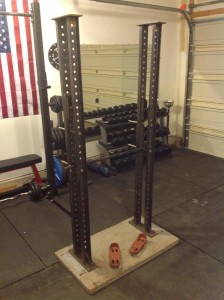
Not “the” rack, but one like it. Note how there was maybe 6 inches between the front and back.
When I was a kid, I recall a very specific moment when I “knew” I wanted to be strong. I was around 13 and had ridden my bike over to my grandparents and at that time the Jackson Weightlifting Club gym was in their barn. I asked my grandma where my Uncle Wayne was and she said, “He’s out back lifting weights”. So, I headed out to say hello. Wayne was a superheavyweight, he was huge and at the time was around 340lbs. He idolized Paul Anderson and I have to say, was a pretty good replica of Paul.
I liked Wayne, as a small child I would pat his stomach and say, “You sure have a big belly, Uncle Wayne”. This got laughs from my Dad and my other Uncles, which probable encouraged me to do it pretty often. My point is that I liked Wayne because he was nice to me, I knew he lifted weights and I knew he was strong and I recalled him winning at weightlifting meets, but I really never looked at him as a strongman. Wayne was a gentle giant who wouldn’t hurt a fly.
As I walked out to the barn, this image was about to change. I heard a series of thunderous “thumps”. As I got closer, I swore I could feel the ground shake with each one…..and as I got closer, I was SURE the ground was shaking. Wayne was in a power rack, wearing only his work pants (covered in oil and grease from the garage), leather lifting shoes, and a belt. He was doing front quarter squats with over 1000lbs. Wayne loved the Clean & Press, the Olympic lift dropped in 1972, and he felt this exercise helped his foundation when he pressed. He had an old York 45lb bar loaded with a hodge podge of weights out to the end and two 50lb scale weights wired to the ends and hanging about a foot under the end of the bar. He was doing sets of ten and with each rep the rack, sitting on a bed of timbers in the dirt floor of the barn, would shake violently and pile drive into the ground, causing the shaking I had felt. As he did each one, muscles began to appear everywhere on his body. Kind of like the Hulk, muscles appeared out of nowhere. Most of all, I noticed the change in his demeanor. The look of fiery determination, he looked at me, but right past me, with a focus that only champions know. I was impressed. Wayne had big muscles, he was strong….and he had that determination, that focus, I wanted to be that!
I fooled around with weights, but a couple years later, I began to train with that focus and I used that power rack often. It was an old York model, with about 4″ to 6″ of space to lift in. York made at least two racks. One had more space. My understanding was this one was an “isometric” rack. It had a chin up bar across the top to stabilize it and had been bolted to old, rough cut, timbers that created a small platform about 3ft wide and 5ft long. I used that thing a lot since I often trained alone. I would do old school leg presses, calf raises, squats, bench presses, partial lifts, and isometrics in that rack. I would use it as squat stands and since it was 8ft tall, for overhead supports. There seemed to be endless uses for that thing and to be real honest, as stupidly as I trained as a teen, often using weights well beyond my capabilities, it probably saved my life!
I entered the Marine Corps and my Uncle Wayne fell on some hard times. Upon returning, I also returned to training with him…..and found the power rack gone! Wayne explained that he needed some cash and since he didn’t use a lot of the equipment, he had sold some stuff. This included an old York set and some other classic stuff…but hey, he could have no idea how much this stuff would be worth later. We’ve all been there. But I was young and being a little older and wiser now…..I feel guilty for how mad I was at him.
I tried to track down that rack, but the guy that had bought it had already sold it to some guy in Centerville, Iowa, about 2 hours away. He gave me a name, Carson. I thought maybe someday I’d be up there for some reason and I’d look him up.
Several years went by and I forgot about that rack. In the meantime, I had one custom built for me that was 8ft tall and had 2ft of width inside, much roomier and a step out that could spot me on squats. It was a good rack. Then, the local gym that was owned my Jeff Jacques and where I got to train with John Ware and Glenn Jacobs (AKA Kane of WWE fame) was sold to a guy named “Carson”. It jogged my memory about that rack and lo and behold, he was from Centerville.
Sometime later, that rack showed up at the gym! This was great! I asked him about the rack, but he wasn’t interested in selling it yet and being a college student, I couldn’t make an offer he couldn’t refuse. Then, a couple years later, the rack was gone! I asked him about the rack and he said he had loaned it to his brother. My heart sank and I was wishing I’d come up with that offer. He said he’d tell his brother of my interest. Then, several years later, I made an effort to contact his brother to see if he still had that rack. He still lived in Centerville and he said he had it and since he didn’t really train anymore, he’d sell it! I made arrangements to go look at it the next time I headed that way. Some months later, that time came and I went up to check this out.
As we headed to his basement I was excited that I’d see that rack after all these years, it was like finding an old friend. As we went down, we went by a rack that as about 5ft tall and he said, “There it is”. I looked around and said, “Where”? He said, “Right here” and patted the short rack. I was sick to my stomach. He had cut this rack to pieces and welded all kinds of extra stuff on it, spread it out, opened the top, and basically butchered it to pieces. He was pretty proud of his work and wanted a premium for his “improvements”. To be honest, the improvements made it a much more useful rack, but I nicely declined as I wanted it in original condition. I think he thought I was nuts. To be honest, I felt a little nuts. I had went from wanting that rack really badly, to not wanting it at all and wishing I’d never found it again.
It was a long drive home. It had been a 15 year journey searching for that old rack and just when I thought I had it….it came up short. Nostalgia, sentimentalism, call it what you will, but I wanted that rack. It was a part of my history and a part of the Jackson Weightlifting Club history. But it also made me think. Victory often comes at the expense of sacrifice and loss, and it becomes sweeter with it. I recovered other parts of my lost treasure and I’m grateful for that.
The whole experience also made me think about not attaching too much to objects. The object is NOT the memory, it merely represents the memory. Whether I have it or not, the memory lives on as long as I choose to remember it. I remember the lifts done in that rack often and that’s what’s important.
I also have a greater appreciation of the things I have now and the memories I’m making with my own children as they begin their lifting careers. Maybe they won’t be as sentimental as their old man, but if they are, I hope I can teach them the real treasure is in the memory, not the thing.
